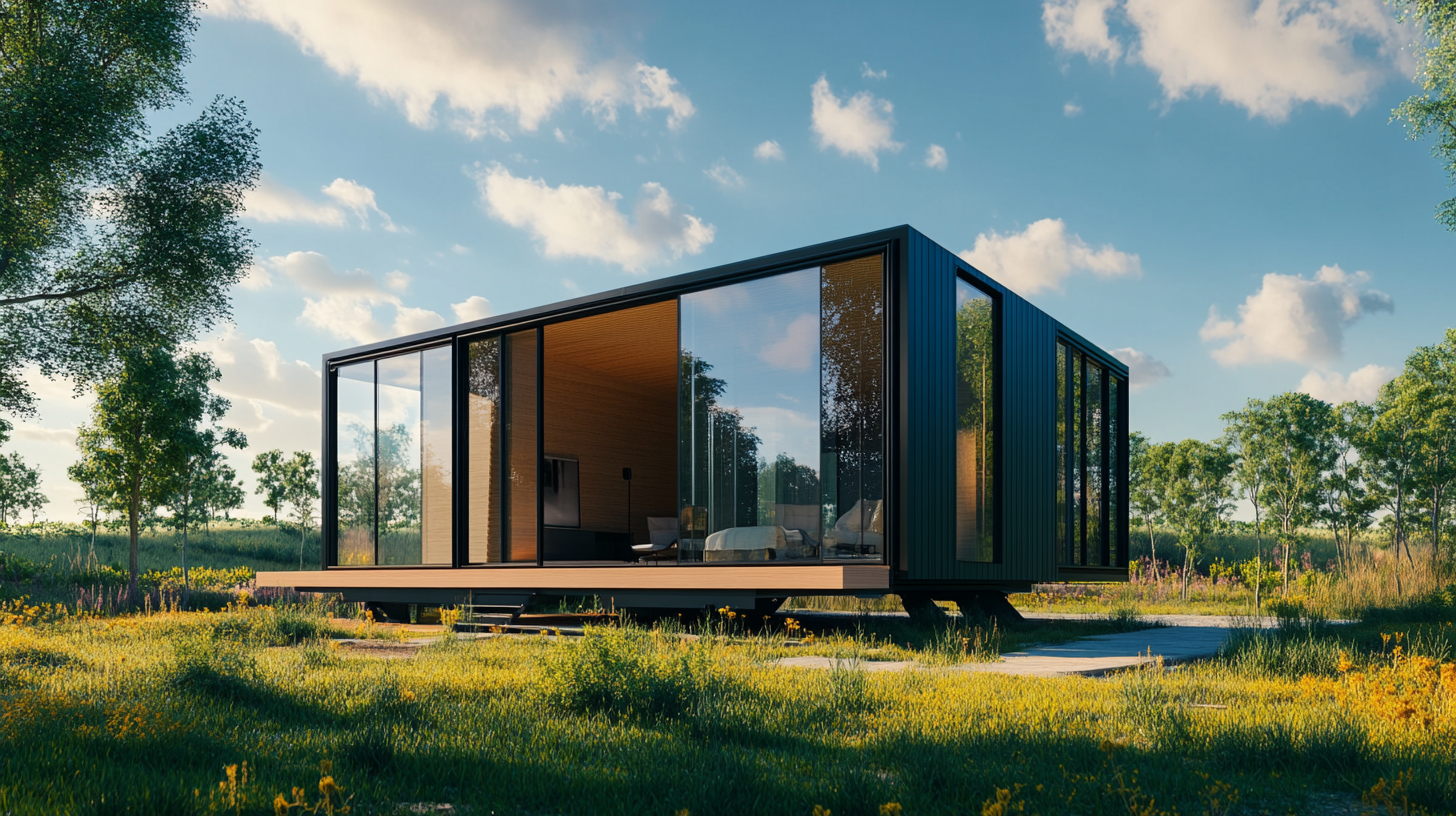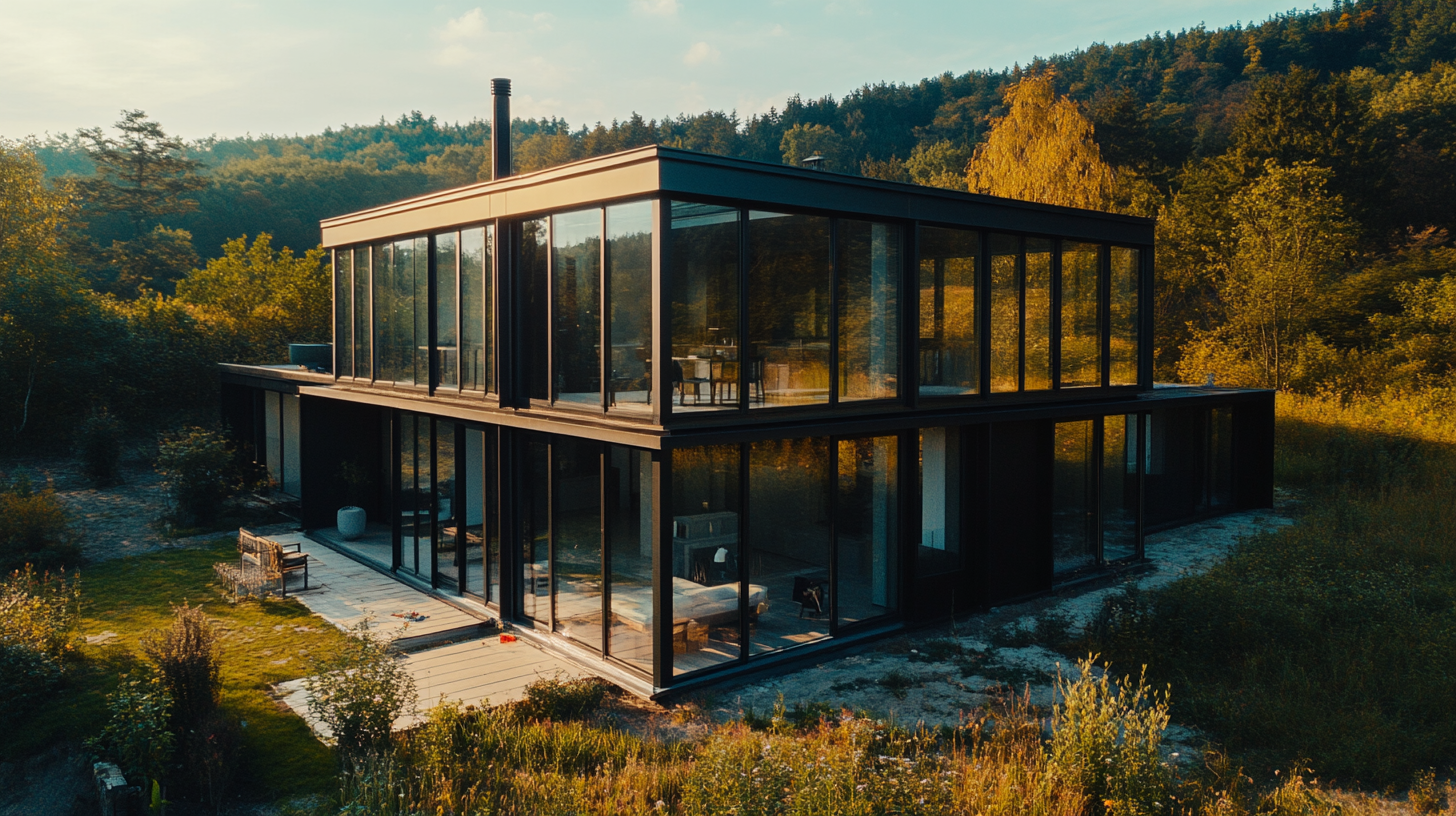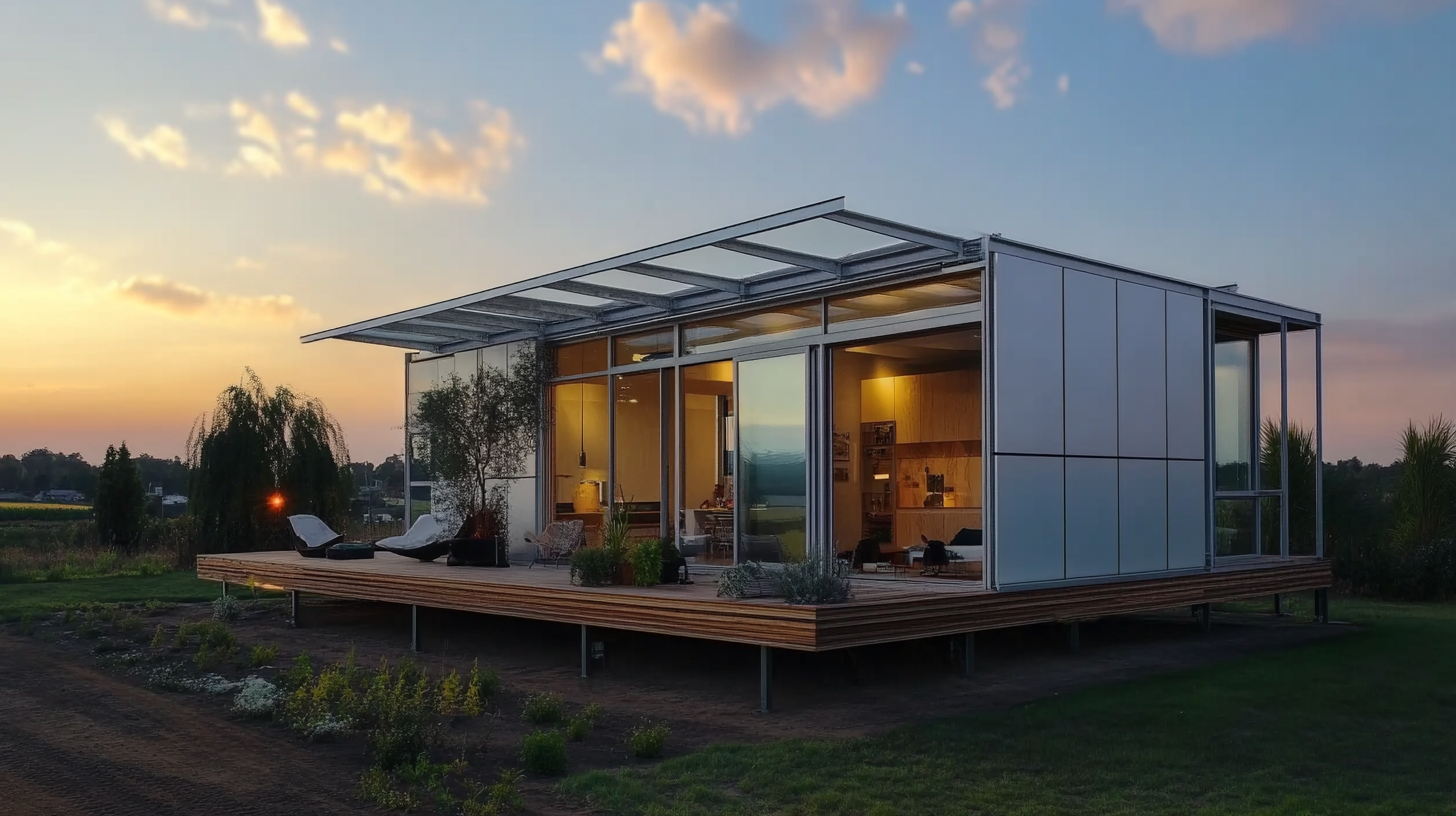
News
Exploring Global Success Stories: Innovative Applications of the Best Prefabricated Houses
 In recent years, the construction industry has witnessed a remarkable shift toward innovative solutions, with
prefabricated houses at the forefront of this transformation. As we navigate the technological trends shaping the industry by 2025, prefabricated houses emerge not only as a sustainable alternative but also as a beacon of efficiency and creativity in architectural design.
These modular homes, built off-site and assembled on location, offer a multitude of benefits, including reduced construction time, lower costs, and minimized environmental impact.
This blog will explore global success stories showcasing the innovative applications of prefabricated houses, highlighting how they address pressing needs while pushing the boundaries of traditional building methods. By delving into various case studies and the latest advancements in technology, we will unravel the potential of prefabricated houses to shape the future of housing around the world.
In recent years, the construction industry has witnessed a remarkable shift toward innovative solutions, with
prefabricated houses at the forefront of this transformation. As we navigate the technological trends shaping the industry by 2025, prefabricated houses emerge not only as a sustainable alternative but also as a beacon of efficiency and creativity in architectural design.
These modular homes, built off-site and assembled on location, offer a multitude of benefits, including reduced construction time, lower costs, and minimized environmental impact.
This blog will explore global success stories showcasing the innovative applications of prefabricated houses, highlighting how they address pressing needs while pushing the boundaries of traditional building methods. By delving into various case studies and the latest advancements in technology, we will unravel the potential of prefabricated houses to shape the future of housing around the world.
Market Trends and Growth Potential of Prefabricated Housing by 2025
As we approach 2025, the prefabricated housing market is poised for remarkable growth, driven by innovative applications and shifting market trends. With estimates projecting the global gypsum board market will increase from $14.19 billion in 2025 to $18.16 billion by 2032, it's clear that sustainable construction materials are gaining traction. This expansion highlights the industry's recognition of prefabricated solutions as not only efficient but also economically viable alternatives to traditional building methods.
In the context of the Saudi Arabian construction chemicals market, significant growth is expected between 2024 and 2035, paralleling the global interest in prefabricated housing. As sustainability becomes a focal point, long-fiber thermoplastic materials are emerging as essential components in various industries, particularly aerospace. Such trends underscore the interconnectedness of market demands, where the adoption of innovative materials could play a pivotal role in reshaping the future of construction. These developments suggest a promising landscape for prefabricated housing, indicating its potential to revolutionize both urban planning and residential living in the coming years.
Exploring Global Success Stories: Innovative Applications of the Best Prefabricated Houses - Market Trends and Growth Potential of Prefabricated Housing by 2025
| Region | Market Size 2023 (Million USD) | Projected Growth Rate (2023-2025) | Popular Materials | Main Advantages |
|---|---|---|---|---|
| North America | 2,500 | 10% | Wood, Steel | Sustainability, Speed of Construction |
| Europe | 3,200 | 8% | Concrete, Prefab Panels | Energy Efficiency, Customization |
| Asia-Pacific | 1,800 | 15% | Bamboo, Steel | Affordable, Fast Construction |
| Latin America | 900 | 12% | Wood, Recycled Materials | Environmental Impact, Speed |
| Middle East | 700 | 9% | Steel, Insulated Panels | Durability, Quick Setup |
Innovative Technologies Shaping the Future of Prefab Homes
The future of prefabricated homes is being profoundly shaped by innovative technologies that address both design and sustainability challenges. For instance, advancements in modular housing processes have been essential in overcoming transportation hurdles, enabling a more efficient construction approach. Recent industry reports indicate that modern tech-enabled modular housing can reduce construction time by up to 50%, providing a viable solution to global housing crises. This efficiency not only accelerates the building process but also minimizes waste, aligning with sustainability goals.

In tandem with this, the influence of space exploration is pushing the boundaries of architectural design on Earth. As architects look to the innovations developed for space habitats, such as adaptable structures and sustainable living ecosystems, they are integrating these concepts into prefab housing. Emerging technologies are paving the way for smart homes that enhance energy efficiency, with projections suggesting that by 2025, smart home technology could reduce energy consumption in residential buildings by 30%. This synergy between space-age advancements and prefab housing is not just about aesthetics; it represents a crucial step toward a more sustainable future in construction, promoting innovative practices that make housing more affordable and accessible for everyone.
Global Case Studies: Successful Implementation of Prefabricated Housing
 Prefabricated housing has emerged as a viable solution to address global housing shortages, showcasing successful implementations across various regions. In Scandinavia, modular houses have revolutionized housing construction, significantly reducing both time and costs. For instance, in Sweden, the city of Malmö has pioneered the use of advanced prefab designs, resulting in energy-efficient homes that blend seamlessly with the urban landscape. This successful case study highlights how innovative building methods can enhance sustainable living while meeting the demands of a growing population.
Prefabricated housing has emerged as a viable solution to address global housing shortages, showcasing successful implementations across various regions. In Scandinavia, modular houses have revolutionized housing construction, significantly reducing both time and costs. For instance, in Sweden, the city of Malmö has pioneered the use of advanced prefab designs, resulting in energy-efficient homes that blend seamlessly with the urban landscape. This successful case study highlights how innovative building methods can enhance sustainable living while meeting the demands of a growing population.
On the other side of the globe, Japan has embraced prefabricated homes to combat the challenges posed by natural disasters. After the 2011 earthquake, companies like Sekisui House introduced resilient house designs that can be quickly assembled and are built to withstand seismic activities. These homes not only offer rapid deployment but also incorporate smart technologies for energy efficiency and disaster preparedness. This case demonstrates the adaptability of prefab solutions to local needs, illustrating how innovative applications in housing can improve safety and quality of life worldwide.
How to Choose the Right Prefabricated House for Your Needs
When considering the right prefabricated house for your needs, it's essential to understand the evolving market dynamics and the advantages these innovative structures offer. The global market for container homes is valued at $61.83 billion in 2023, with projections indicating an increase to $64.75 billion in 2024 and an astonishing $100.87 billion by 2032. This compound annual growth rate of 6.7% reflects a growing acceptance and demand for sustainable and flexible housing solutions.
Choosing the ideal prefabricated house involves assessing various factors, including your specific requirements, budget, and environmental impact. Prefabricated houses are known for their cost-effectiveness, reduced construction time, and lower carbon footprint compared to traditional building methods.
Additionally, customization options are abundant, allowing homeowners to tailor designs that suit their lifestyle while ensuring energy efficiency. As this market continues to expand, exploring innovative applications and understanding your needs are crucial steps in making an informed decision.
Sustainability in Prefab Construction: Best Practices and Benefits
Sustainability has become a cornerstone in the prefabricated construction industry, significantly impacting its growth and adoption worldwide. According to a report by Research and Markets, the global modular construction market is projected to reach $157 billion by 2023, driven largely by the demand for environmentally friendly building solutions. Prefabricated houses utilize advanced building techniques that minimize waste, reduce construction time, and lower energy consumption, which aligns perfectly with modern sustainability goals. For instance, utilizing sustainable materials like recycled steel and sustainably sourced wood can further enhance the eco-friendliness of these structures.
In addition to reducing material waste, prefab homes often incorporate energy-efficient systems such as solar panels and high-performance insulation. The U.S. Department of Energy notes that these energy-efficient features can reduce utilities by 30-50%, which contributes to significant long-term savings for homeowners. Furthermore, prefabricated construction allows for better control of building quality, which is essential in meeting energy efficiency standards. With these innovative applications, it is clear that prefabricated houses not only offer a sustainable alternative to traditional construction but also foster a holistic approach to eco-conscious living.

